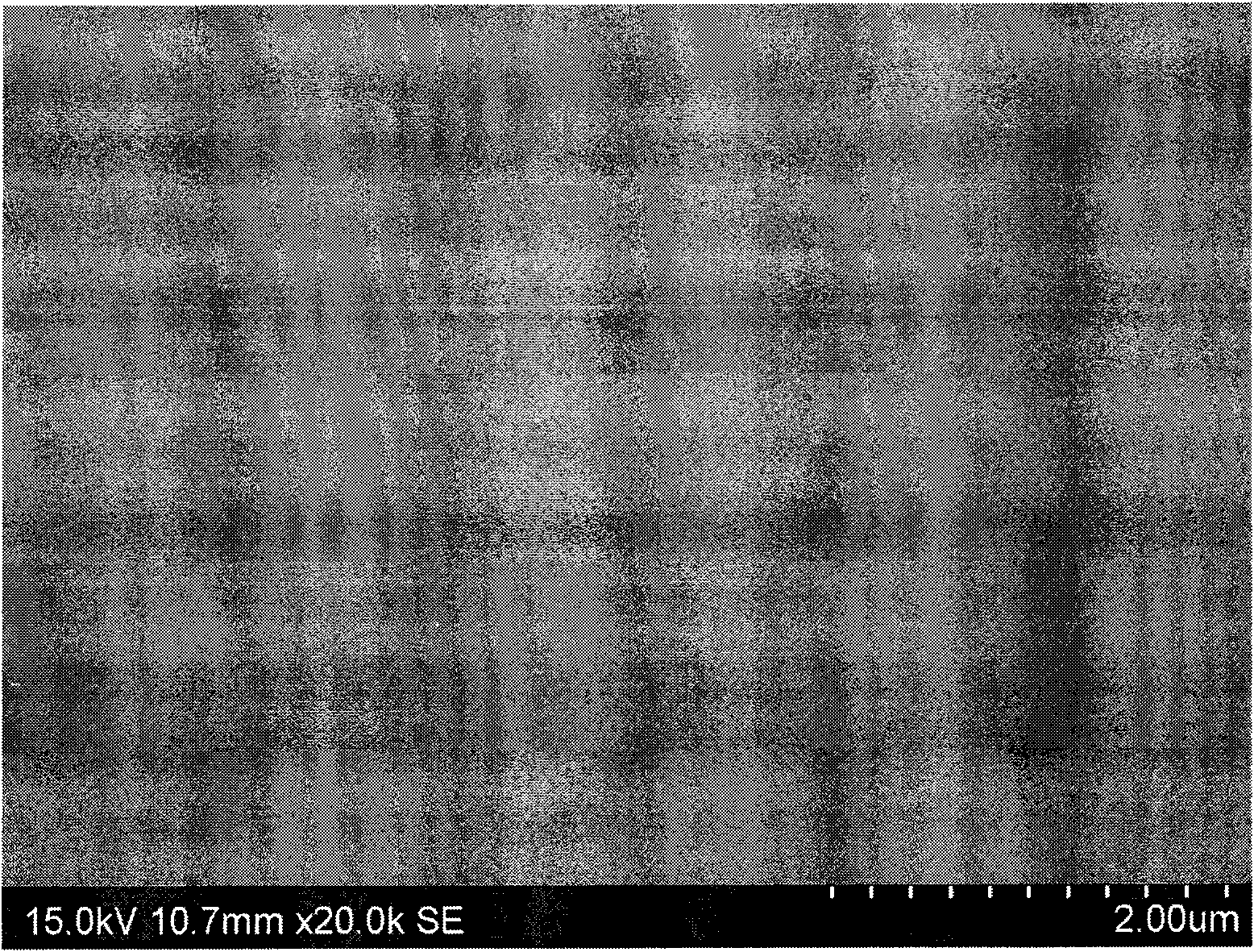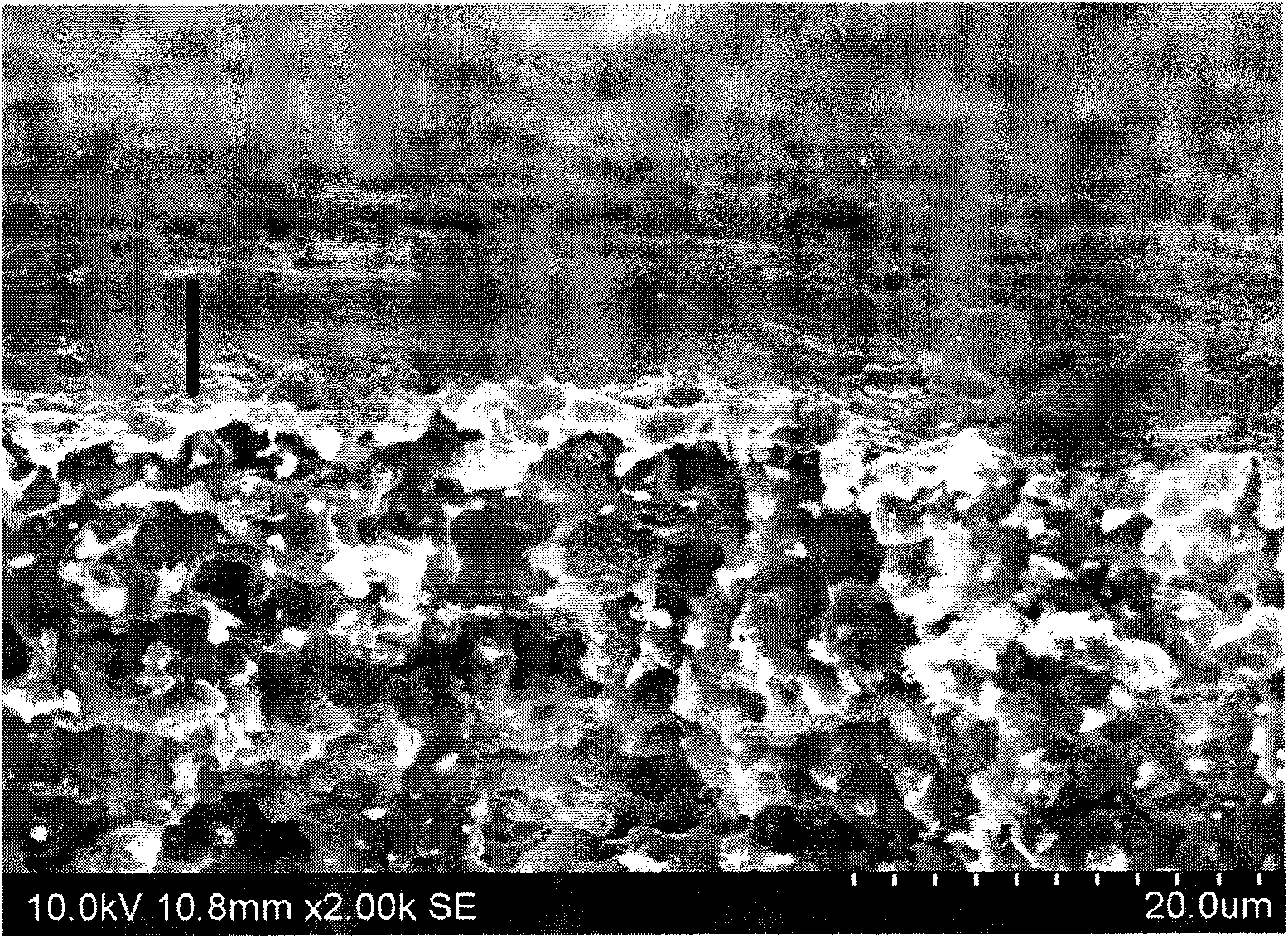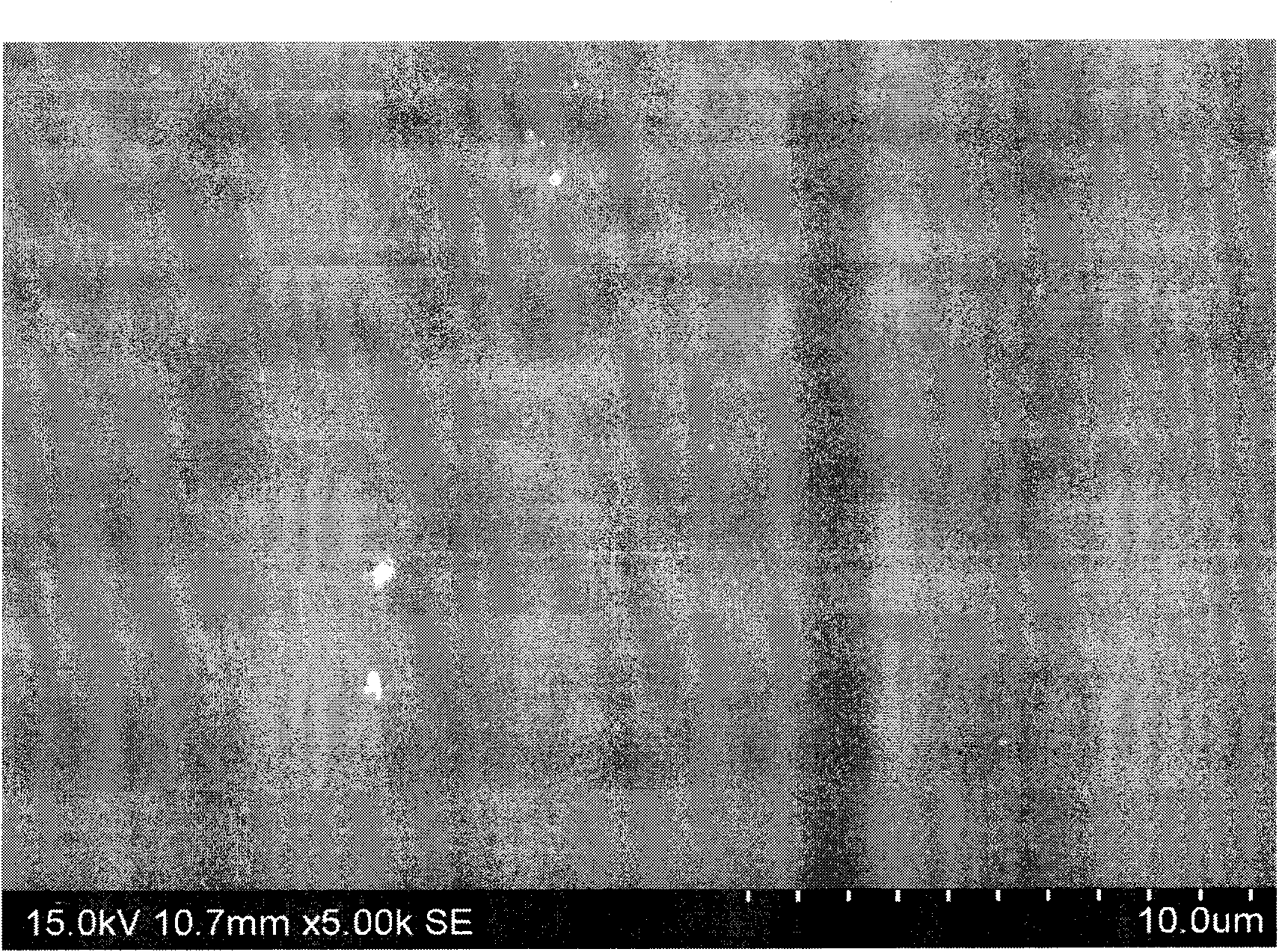Functional composite membrane capable of recognizing alkali metal ions and preparation method thereof
An alkali metal ion, composite membrane technology, applied in chemical instruments and methods, membrane technology, semi-permeable membrane separation, etc., can solve the problems of raw materials for synthetic membrane materials and limitations of membrane production methods
- Summary
- Abstract
- Description
- Claims
- Application Information
AI Technical Summary
Problems solved by technology
Method used
Image
Examples
Embodiment 1
[0049] (1) 3-triethoxysilyl-1-propylamine and phenylisocyanate are mixed in a three-necked flask in a molar ratio of 1:1, and toluene is added thereto so that the content of toluene is 80Wt%. Stirring and reacting at 80° C. for 5 hours, and recrystallizing and purifying the product after completion of the reaction to obtain a silicon-containing compound containing ureido groups. The product was characterized as the target product by FT-IR, NMR, DSC and other methods.
[0050] (2) the silicon-containing compound that contains urea group that step (1) obtains is dissolved in chloroform and is mixed with the solution that concentration is 1.2M, and adds the concentrated hydrochloric acid (mass concentration is 37%) as catalyst, the add-on of concentrated hydrochloric acid is the catalytic amount; after standing for 8 hours, the silicon-containing compound solution containing urea group is obtained, and it is set aside;
[0051] (3) Soak the dried polyacrylonitrile (PAN) micropor...
Embodiment 2
[0054] (1) γ-aminopropyltriethoxysilane and 3,4-dimethoxyphenylisocyanate are mixed in a three-necked flask in a molar ratio of 1:1, and benzene is added thereto so that the content of benzene is 90Wt%. , stirred and reacted at a temperature of 40°C for 8 hours, after the reaction was completed, the product was recrystallized and purified to obtain a silicon-containing compound containing a urea group. The product was characterized as the target product by FT-IR, NMR, DSC and other methods.
[0055] (2) dissolving the silicon-containing compound containing urea groups obtained in step (1) in tetrahydrofuran to prepare a solution with a concentration of 3M, and adding glacial acetic acid as a catalyst, the amount of glacial acetic acid being a catalytic amount; leave standstill for 8 hours Finally, a silicon-containing compound solution containing urea groups is obtained for subsequent use;
[0056] (3) Soak the dried polyvinylidene fluoride (PVDF) microporous plate support la...
Embodiment 3
[0059] (1) γ-aminopropyl trimethoxysilane and phenyl isocyanate are mixed in a three-necked flask in a molar ratio of 1:1, and xylene is added thereto so that the content of xylene is 85Wt%. The reaction was stirred and reacted at 60°C for 8 hours. After the reaction was completed, the product was recrystallized and purified to obtain a silicon-containing compound containing a urea group. The product was characterized as the target product by FT-IR, NMR, DSC and other methods.
[0060] (2) the silicon-containing compound that contains urea group that step (1) obtains is dissolved in dichloromethane and is mixed with the solution that concentration is 2.4M, and adds the concentrated hydrochloric acid (mass concentration is 37%) as catalyzer, the concentration of concentrated hydrochloric acid The amount added is a catalytic amount; after standing for 8 hours, a silicon-containing compound solution containing urea groups is obtained, which is set aside;
[0061] (3) Soak the dr...
PUM
| Property | Measurement | Unit |
|---|---|---|
| Thickness | aaaaa | aaaaa |
| Average pore size | aaaaa | aaaaa |
| Thickness | aaaaa | aaaaa |
Abstract
Description
Claims
Application Information
 Login to View More
Login to View More - R&D
- Intellectual Property
- Life Sciences
- Materials
- Tech Scout
- Unparalleled Data Quality
- Higher Quality Content
- 60% Fewer Hallucinations
Browse by: Latest US Patents, China's latest patents, Technical Efficacy Thesaurus, Application Domain, Technology Topic, Popular Technical Reports.
© 2025 PatSnap. All rights reserved.Legal|Privacy policy|Modern Slavery Act Transparency Statement|Sitemap|About US| Contact US: help@patsnap.com



